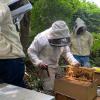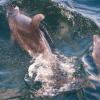Impact of Low-Intensity Hunting on Game Species in and Around the Kanuku Mountains Protected Area, Guyana Research Paper
Unsustainable harvest is driving population declines in tropical forest species across the globe. Despite maintaining the second highest percent forest cover in the world (85%), concern is increasing in Guyana that unmanaged commercial and subsistence hunting activities could result in defaunation, and the cascading ecological effects of “empty forests.” The Rupununi region of southwestern Guyana, home to the Kanuku Mountains Protected Area (KMPA), hosts one of the world's lowest human population densities (0.42 people/km2), as well as large, intact tracts of both Neotropical savanna and forest habitats, making it one of the country's most biodiverse regions. Indigenous Makushi and Wapichan communities that reside there have maintained subsistence lifestyles mediated by traditional beliefs and management practices for millennia. However, as human populations and access to markets increase, there is a corresponding increase in the harvest of natural resources. Protected areas have long been recognized for their role in biodiversity conservation, while also serving as a reserve for subsistence hunters. The KMPA, one of Guyana's newest protected areas, allows for the continued sustainable use of its resources by indigenous communities. It is critical to understand the patterns, impacts, and levels of hunting that are sustainable in and around the protected area so that biodiversity can be managed and conserved effectively. Our study shows that the impact of current hunting intensity in and around the KMPA remains relatively low and supports the hypothesis that Neotropical forests can support hunting pressure of <1 person/km2. While our results show that current levels of hunting in the region can be considered sustainable, small shifts in activity patterns and distribution of preferred game species were observed in sites subject to higher hunting intensity, which in turn appears to have had cascading effects on non-hunted species. Our results serve as a caution for the Kanuku Mountains region and an indication of the truly low levels of harvest that some species can sustain before populations begin to show declines. Further, we suggest a system-level approach to monitoring that incorporates both preferred game and non-hunted species, as well as indigenous knowledge of patterns of use and trends in populations of game species. This approach to monitoring would serve as an effective early warning system, allowing communities, managers, and policy makers to intervene before animal populations are significantly impacted by overhunting.
Area of interest: Guyana
Year:2019




